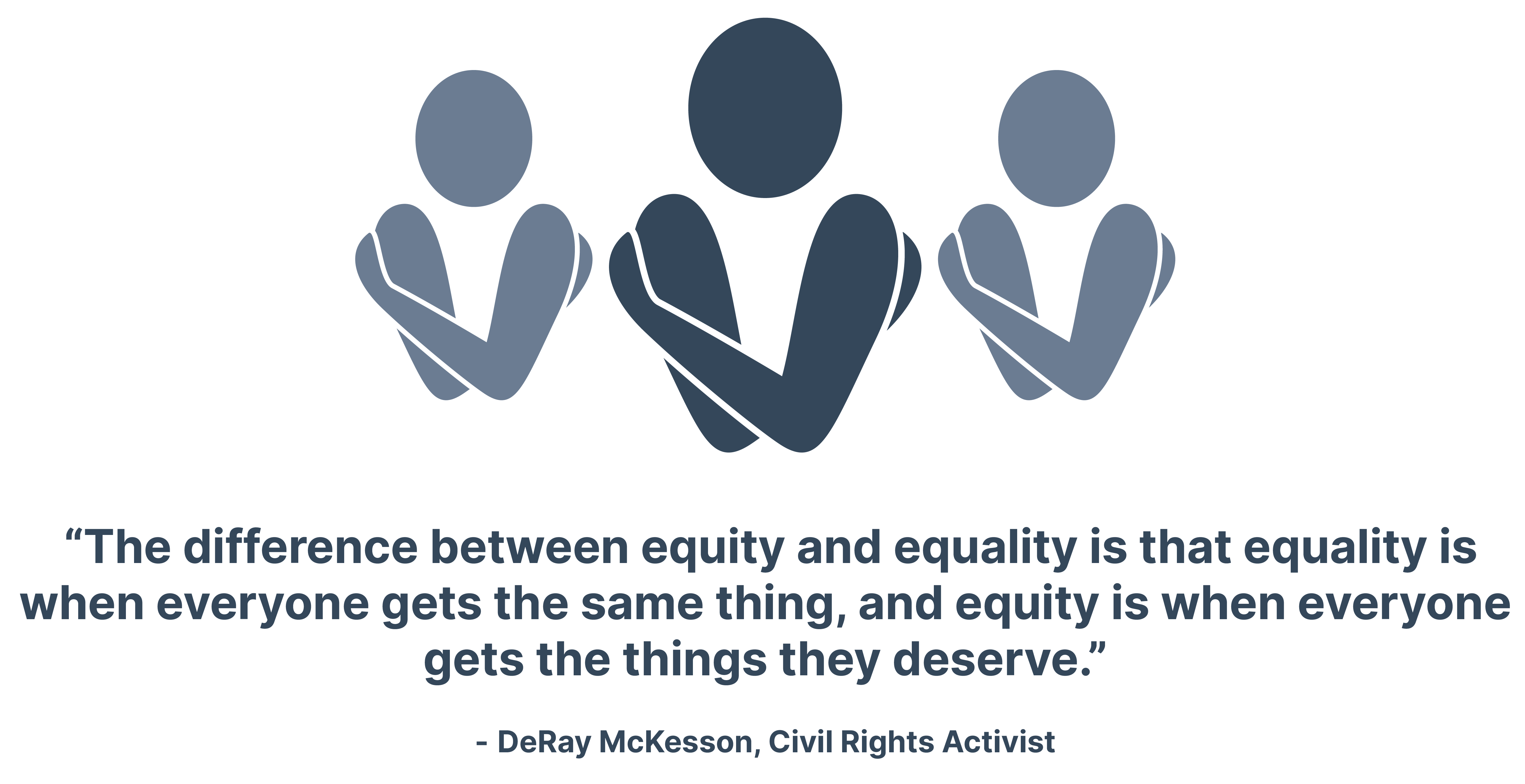International Women's Day 2023: How to Embrace Equity

Source: International Women’s Day
International Women’s Day is celebrated on 8th March, and a theme is chosen that both celebrates women and draws attention to issues that are affecting women across the world. For 2023, that theme is “Embrace Equity”.
The difference between equity and equality
While many people use the words equity and equality interchangeably, the words are actually quite different. You’re probably more familiar with the term equality, or the belief that “every individual has an equal opportunity to make the most of their lives and talents. It is also the belief that no one should have poorer life chances because of the way they were born, where they come from, what they believe, or whether they have a disability.”
Equality is something that is monitored under the law. For example, in the UK we have the Equality Act of 2010 that specifically prohibits employers from discriminating against anyone with protected characteristics. For example, under the Equality Act, you couldn’t exclude someone from a specific job because of their race or gender. There is a similar bill making its way through the US at the moment, but it has yet to be passed into law.
So, what is equity then and how is it different from equality?
Equity is defined as “fair treatment, access and advancement for everyone.” More specifically, it refers to fairness and justice. While residing in the same space as equality, equity differs in some subtle ways. More specifically, equity takes into consideration the context and unique circumstances of each individual, and demands that treatment and access be adjusted accordingly.
Activist DeRay McKesson best describes the difference: “The difference between equity and equality is that equality is when everyone gets the same thing, and equity is when everyone gets the things they deserve.”

Equity, then, is a mechanism for addressing an unequal system.
Equity vs equality
The question many ask then is why isn’t equality enough? Equality has historically been a very important aspect of political life and it’s the basis on which a lot of movements were started. In the professional sphere, there has been the campaign for equal pay, the Equality Act, and more.
Equal treatment under the law is a foundational belief, but as political, feminist, and anti-racist philosophy has evolved, we have seen that equality is not enough. Under a system that is driven by equality, everyone should have access to the same opportunities, regardless of their background. Equity, however, acknowledges that not everyone is starting at the same level. There are huge disparities between what resources different facets of the population have access to.
And that’s what this year’s theme is looking to address; equity-based solutions rather than equality-based solutions.
“Treating different things the same can generate as much inequality as treating the same things differently.” –Kimberlé Crenshaw, American Civil Rights Advocate

What does that mean in the workplace?
Or, the better question is, why am I, the Content Marketing Manager at Hurree writing about this? As a tech company, we strive to be an example and avoid the pitfalls of the ‘stereotypical tech startup’.
According to Forbes, while women make up 47% of the workforce, they only make up 28% of professional leadership positions. At Hurree we are very proud to buck this trend - women make up almost 53% of our overall workforce and almost 56% of our senior leadership team (including our COO and VP of Development).
Despite this, we know there will always be work to do to address the issue of equity in the workplace, and more specifically the tech space. Addressing it involves tangible steps or equity-based solutions as IWD would say. Here are some ways to get started:
- Evaluate your company: you don’t know where to go unless you know where you’re starting. A comprehensive audit of your policies and workforce is a great place to start. Look at things like hiring policies, pay equity, sick policies, and flexible working. You may also want to survey your team to get their thoughts directly (anonymously of course).
Set goals and share progress: Once you know where your weaknesses are, you can build a plan to address them. However, accountability is an important element, so keeping your team up-to-date on the goals you’ve set and how close you are to achieving them will keep you on track. - Address gaps in knowledge: unconscious bias training is a good example of how to start addressing equity in the workplace, but it shouldn’t be where it stops. When everyone in your team is aware of the challenges facing others, they can work towards closing gaps in their own behaviour and communication. Providing comprehensive and regular training is a great way to get the ball rolling, but even things like DEI book of film clubs can engage people through the media they consume already.
- Accommodate your employees: people with health conditions and disabilities are often left out of conversations around equity and inclusion, yet they represent a large percentage of the workforce. Going above and beyond the legal requirements and supporting your employees who may be disabled or neurodivergent or chronically ill means that those people don’t miss out on the opportunity to be part of your team.
- Make pay equity a priority: at the end of the day, people work to make money. Equity is a moot point if different groups are being paid drastically different wages. And this goes beyond the gender pay gap; race, sexuality, gender identity, class, and social background all play a part in pay disparity, so that should be a major part of any pay audit or policy change.
Equity-based solutions require work, but before that, they require knowledge. The type of knowledge that challenges, provides context and allows you to envision what comes next for your company and yourself.
As not just a content marketer, but also a writer, I find the best place to start is always to read and read voraciously, so here are a few titles to get you started on your journey to #EmbraceEquity:
- Women, Race, and Class - Angela Davis
- On Intersectionality: Essential Writings - Kimberlé Crenshaw
- Sister Outsider - Audre Lorde
- The Transgender Issue - Shon Faye
- Gender Trouble: Feminism and the Subversion of Identity - Judith Butler
- Feminist City: Claiming Space in a Man-Made World - Leslie Kern
- Why I'm No Longer Talking to White People About Race - Reni Eddo-Lodge
- Feminism is for Everybody - bell hooks
- Fresh Banana Leaves: Healing Indigenous Landscapes through Indigenous Science - Jessica Hernandez
- A Mind Spread Out on the Ground - Alicia Elliott
- Brit(ish): On Race, Identity and Belonging - Afua Hirsch
- Natives: Race and Class in the Ruins of Empire - Akala
Share this
You May Also Like
These Related Stories

International Women's Day 2024: How to Inspire Inclusion

Working From Home: Hurree’s Top Tips

